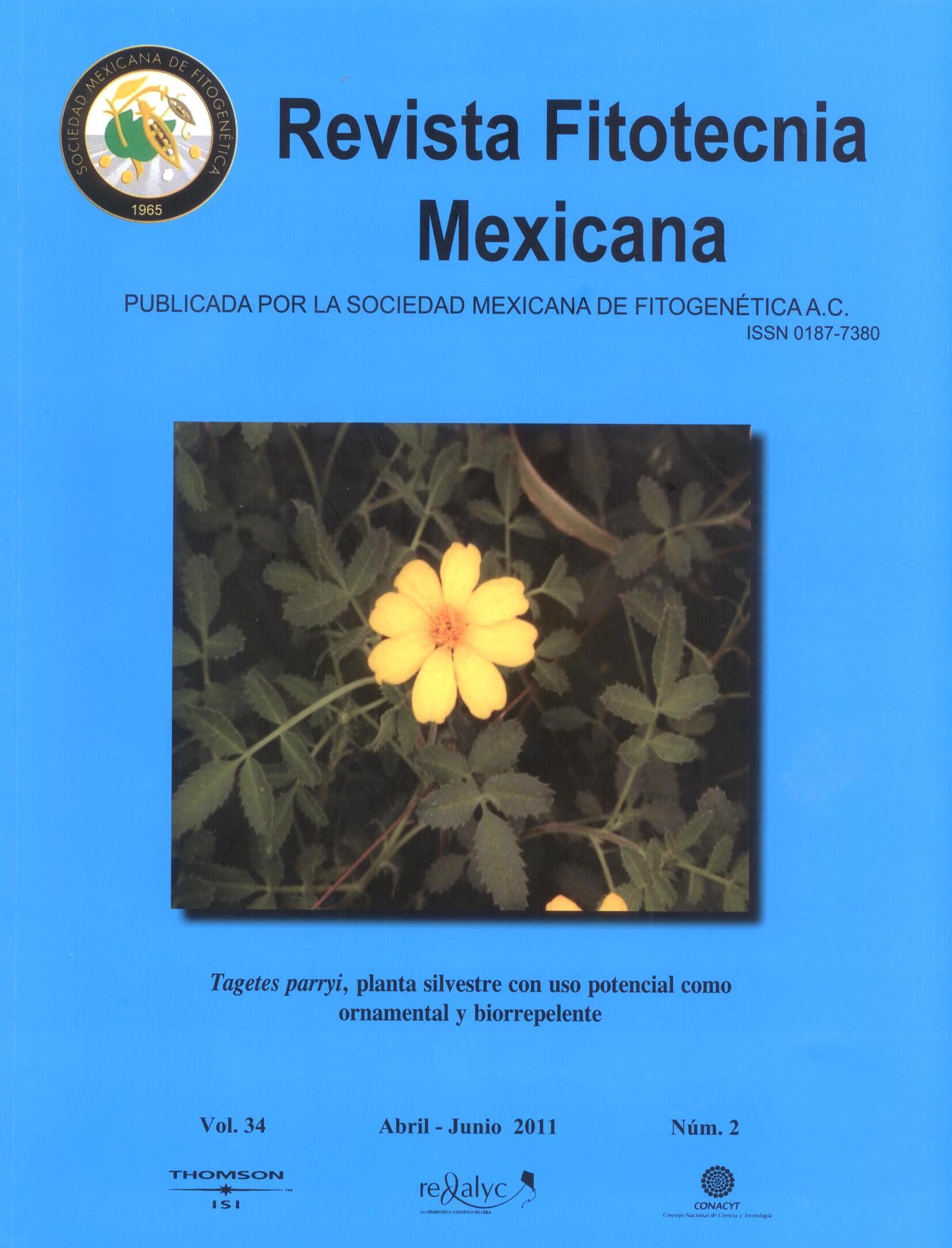GRAIN YIELD AND YIELD COMPONENTS OF NATIVE MAIZE POPULATIONS FROM TAMAULIPAS STATE EVALUATED UNDER CONTRASTING ENVIRONMENTS
Main Article Content
Abstract
Among native maize (Zea mays L.) populations of the State of Tamaulipas, México, some stand out in grain yield; however their utilization in breeding programs has been limited. With the aim to identify outstanding populations for potential use in maize breeding programs, 29 native populations of Tamaulipas (collected from 2001 to 2004), plus six improved varieties, were evaluated for grain yield and yield components under three environments contrasting in altitude and temperature. Environments were: Dry Tropical (DT), Transition (TRN) and High Valleys (HV), located at altitudes of 200, 1950 and 2250 m, respectively. Based on their geographic origin, four groups were defined (Groups 1 to 4) for native populations; two groups of improved varieties were added (Groups 5 and 6), one for the tropical region and the other for the temperate zones. There were differences among environments (P ≤ 0.05) for grain yield, so that grain yield tended to be higher at higher altitude and lower temperature; no statistical differences were detected for grain yield components between TRN and HV. Among native maize populations from Tamaulipas, the ones collected from the mountain region (Group 4), located at intermediate altitude, showed higher yield in the TRN and HV; locations, population C-4031 showed the highest yield (8.3 t ha-1), statistically similar to that of improved varieties used in the central Valleys of México. Native populations from Tamaulipas developed longer ears with high number of kernels per row, thin cobs, good yield and high proportion of grain per ear. There results show that these native populations may contribute to broadening genetic diversity and could enhance for enhancing agronomic traits in of maize breeding.

